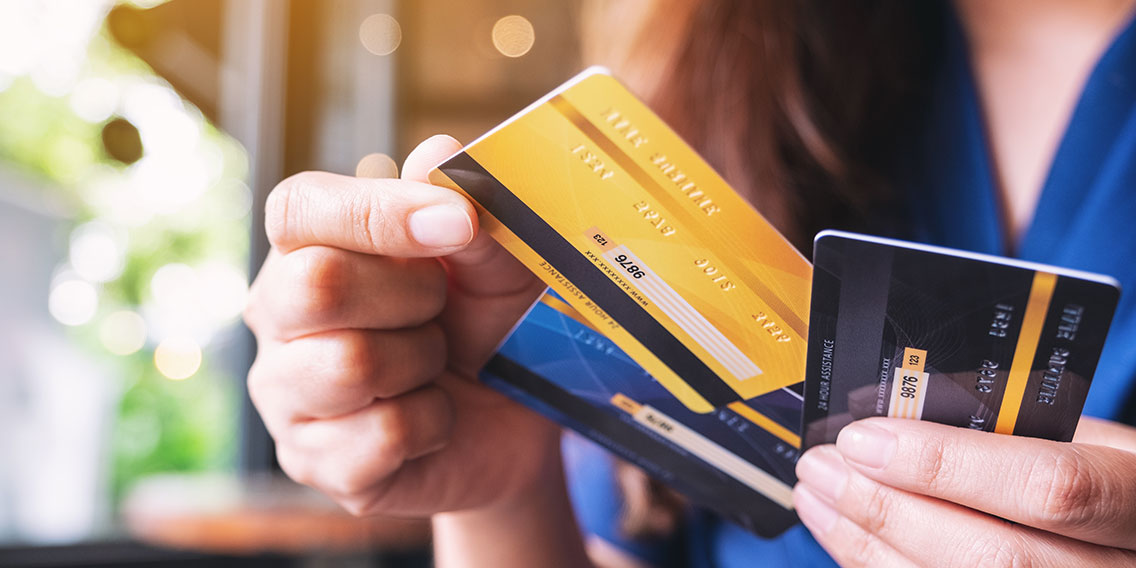Credit Cards
What Is a Cash Advance and How Does it Work?
A cash advance lets you borrow money quickly, but it may be more expensive than the alternatives. Here’s all you need to know about cash advances.
EXPECTED READ TIME:9 minutes
You’re at your favorite local farmer’s market about to buy some produce when the seller apologizes — they only take cash. Or maybe you’re trying to split dinner with friends and are coming up short.
You know there’s an ATM nearby, but you don’t have enough in your debit account to cover the expense. You know your credit card offers cash advance. It sounds convenient, but is it the best option?
What Is a Credit Card Cash Advance?
A cash advance is a small, instant loan from your credit card issuer. Unlike traditional loans, you don’t apply and wait to be approved. Instead, you simply withdraw the amount you need from an ATM, bank, or credit union like you would with your debit card. But unlike with your debit card, the money won’t come out of your checking account, and you’ll have to repay it with interest and fees.
How Do Cash Advances on Credit Cards Work?
Even if you’re a pro at using credit cards, cash advances can be confusing. That’s because they have their own fees and terms of use that are different from your credit card. Here’s what to watch out for.
Borrowing Limits
Credit cards usually have separate credit limits for cash advances and regular charges. While each credit card issuer sets their own terms, your cash advance limit is usually between 20% and 50% of your credit card’s limit. That means if your credit card limit is $10,000, then your cash advance limit is likely between $2,000 and $5,000.
Your cash advance limit is usually between 20% and 50% of your credit card’s limit.
No Grace Period
One advantage to credit cards is they offer a grace period on your loan. You don’t have to repay them right away, and you don’t have to pay interest on your charges as long as you pay off your balance before the end of your billing cycle.
Cash advances don’t work that way. You’ll begin accruing interest from the day you borrow that money.
Where Can I Get a Cash Advance?
There are three ways to get a cash advance. While your credit card issuer will charge the same fees regardless of how you get your cash advance, you may pay additional fees if you use an ATM or receive cash at a bank or credit union.
You can use your credit card at an ATM to withdraw cash the same way you would withdraw from checking.
At an ATM
You can use your credit card at an ATM to withdraw cash the same way you would withdraw from checking. You’ll need a PIN for your credit card to do this. If you don’t already have a PIN for your card, you can request one from your issuer, which may take as much as a week to set up.
At a Bank or Credit Union
You can also visit a bank or credit union to request a cash advance. Most financial institutions will help you even if they didn’t issue your credit card. Just make sure the institution is in the same network as your card. For instance, if your credit card has a Visa logo then you’ll only be able to get a cash advance from a bank or credit union that works with Visa.
Like with an ATM, you may need a PIN for your credit card to get a cash advance from a bank or credit union. Be prepared to show a photo ID and your credit card to the teller. Then let them know how much you’d like to borrow.
Like with an ATM, you may need a PIN for your credit card to get a cash advance from a bank or credit union.
With Convenience Checks
Some credit card issuers offer convenience checks along with your credit card. You can write these checks to yourself and deposit them into checking if you need to boost your balance, or you can write them to a merchant you need to pay. Either way, the money backing these checks draws on your line of credit with your credit card issuer. Because that money isn’t coming out of your checking account, you’ll have to repay it with interest and fees.
Over the Phone
Some (but not all) credit card companies will process a cash advance request over the phone. You can call your card issuer, tell them how much money you want to borrow, and give them information about the account you want the money deposited in. Be prepared to prove your identity by providing your account number, social security number, or other personal information so they can confirm you’re really you.
Some (but not all) credit card companies will process a cash advance request over the phone.
Transactions That Can Be Treated Like Cash Advance
There are some transactions that may be treated like a cash advance depending on your credit card company’s terms of use. It’s important to consult your credit card agreement or speak with your card issuer about what transactions are considered cash advances so you understand what these services will cost. Transactions that might be treated like a cash advance include:
Paying bills through a third-party bill pay service
Money orders
Traveler’s checks
Peer-to-peer money transfers
Foreign currency exchanges
Gambling expenses and lottery tickets
Is a Cash Advance Expensive?
Cash advances are loans, and like all loans, you’ll have to pay for borrowing. Generally, cash advances are more expensive than alternatives, but they’re also easier to access quickly. You’ll have to weigh the pros and cons to determine whether a cash advance is best for your situation. There are two types of costs you’ll need to consider: interest and fees.
Interest Rates for Cash Advances
Most credit cards have a separate interest rate for cash advances, and usually it’s higher than the interest on regular charges. As of 2023, the average interest rate on cash advances is 21.2%, but it can be as high as 36%.
Fees on Cash Advance
Credit card issuers charge all sorts of fees, including a cash advance fee for using the service. Some charge a flat fee per cash advance, while other charge between 3% and 5% of the total borrowed.
Companies that charge a percentage usually charge a minimum dollar amount. For instance, if the standard fee is 3% per cash advance but your lender charges a minimum of $5 per transaction, then you’ll pay whatever amount is greater. As of 2023, the average fee on a cash advance is $8.62 per transaction.
ATM and Bank Fees
You’ll likely have to pay an ATM or bank fee if you withdraw cash using your credit card. This is a separate fee from what your credit card issuer charges and will depend on the ATM operator, bank, or credit union you’re using and whether you have an account with them.
These fees can be as low as $1.50 or as high as $10 per transaction. If you’re withdrawing from an ATM, it’s possible to be charged by the ATM operator and by your financial institution if the ATM is out-of-network.
You’ll likely have to pay an ATM or bank fee if you withdraw cash using your credit card.
Check the Schumer Box for Details
Before you take out a cash advance, check the Schumer Box on your credit card agreement. This box includes the interest rate and fees for your credit card, but it will also include the interest rate and a list of fees (and their amounts) for cash advances. You can contact your card issuer to request this information if you can’t find your original agreement.
Pros and Cons of Cash Advances
Cash advances can be convenient because they’re fast and you can get them lots of places. But that convenience comes at a high cost. Here’s what you should consider before taking out a cash advance.
| Pros of Cash Advances | Cons of Cash Advances |
|---|---|
| Fast — no additional approval process | High interest rate |
| Convenient — access them at any ATM, bank, or credit union | High fees — may involve multiple fees per cash advance |
| Flexible — can be withdrawn like cash or deposited in checking | Can be hard to pay off and increase debt load |
| - | No grace period |
| - | Borrowing limit can be low |
| - | Can impact your credit score |
Alternatives to Cash Advance
Cash advance isn’t always the best financial tool for the job. Here are some great alternatives to consider first.
Peer-to-Peer Payment Apps
Peer-to-peer payment apps let you send payments to friends and family instantly. If you need to give someone cash — maybe the friend you’re splitting dinner with, for instance — you can use an app like Zelle to send money right from your account to theirs for free.
Just remember that peer-to-peer payments are not a good way to exchange money with strangers. You cannot reverse a payment once it’s been sent, so only use apps like Zelle with people you know well.
Just remember that peer-to-peer payments are not a good way to exchange money with strangers.
Your Credit Card’s Other Features
Some credit card companies are offering new ways to draw on credit that may be cheaper than cash advances. For instance, some companies are partnering with peer-to-peer payment apps to let you send money to friends and family without fees. Not all credit card companies offer this feature, and many restrict how much you can send and which peer-to-peer apps you can use, so check with your credit card issuer for details.
Personal Loans
Personal loans are a great alternative to cash advances, especially if you need to borrow a lot. They typically offer a lower interest rate, longer borrowing term, and much higher borrowing limits than cash advances. And because they’re installment loans, they’re easier to pay off.
Many credit card companies are starting to offer personal loans to their customers. These loans can be appealing since you don’t have to fill out a new application or go through a credit check, and the interest rate is often lower than your card’s rate. But it’s important to shop around, especially since credit unions usually offer the best terms and rates on personal loans.
Personal loans are a great alternative to cash advances, especially if you need to borrow a lot.
Emergency Fund
An emergency fund is a savings account set aside for unexpected, essential expenses. If you lose your job, wreck your car, or end up in the hospital, your emergency fund is your safety net. You don’t want to dip into this account for just anything, but if it’s a real crisis then you’re better off drawing on your emergency fund and building it back up once the crisis is over.
Should I Use a Payday Loan Instead of Cash Advance?
No, a payday loan is not a good alternative to cash advance. While cash advance is more expensive than many options, payday loans are just as pricey. Plus, they tend to create expensive cycles of borrowing that can be difficult to break.
The Takeaway
A cash advance is a quick, easy way to access money when you need it, but convenience costs. Before you whip out your credit card at the ATM, consider some of the other tools at your disposal that may be cheaper. Once you’ve weighed the pros and cons, you can be confident in your decision to cash advance — or not!
Credit Cards for the Way You Live
Discover the diverse offering of products, services, and support available to our members.




